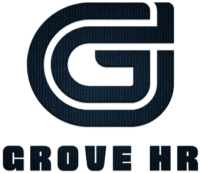Creating and working toward well-defined goals in a self-performance review is not just helpful—it’s fundamental to long-term career success. Setting a mix of both long-term and short-term goals allows employees to gain clarity, track progress, and stay aligned with organizational objectives.
When you have a clear vision of your future and break that down into measurable steps, you build a roadmap to real achievement.
Long-term goals serve as guiding beacons, helping employees stay on course and navigate challenges with purpose. On the other hand, short-term goals offer frequent checkpoints that boost confidence and keep performance high.
Combined, they form a powerful strategy for professional growth. Whether you’re a remote freelancer, work for a local startup, or contribute to a global corporation, leveraging HR tools with performance review features is a smart move.
These tools allow you to monitor your growth with accuracy, avoid the burden of manual tracking, and save valuable time.
Employees who take goal-setting seriously tend to be more productive, more fulfilled in their roles, and more prepared for advancement opportunities.
1. Functional Goals

Process Optimization
Optimizing business processes is a crucial goal that significantly improves workplace efficiency. Employees should consider how they can take ownership of refining procedures that not only increase productivity but also align with modern industry standards.
Examples:
- Improve interdepartmental collaboration by consistently using communication platforms such as Slack or Microsoft Teams to reduce email back-and-forth.
- Develop and implement process modeling strategies that make workflows more transparent and easier to refine through team feedback and performance analysis.
Sustainability
Embracing sustainability at work isn’t just good for the planet—it’s a reflection of a forward-thinking, responsible organization. HR teams and office managers play a vital role in creating a workplace that respects environmental and personal well-being.
Long-term sustainability goals not only reduce environmental impact but also foster a healthier, more conscientious workplace culture.
Examples:
- Eliminate single-use plastic items in the office by providing branded, reusable alternatives for all employees, contributing to a more eco-friendly office environment.
- Plan and execute at least four wellness-focused events throughout the year to promote healthier habits, such as yoga classes, nutrition workshops, or mental health days.
Customer Engagement
View this post on Instagram
Developing strong, trustworthy relationships with customers should be a long-term priority, particularly for those in customer-facing roles.
Employees in Sales, Marketing, and Customer Support must build rapport, offer value consistently, and meet expectations across various touchpoints.
Examples:
- Host regular monthly training sessions on customer relationship strategies and tools to keep the team updated and engaged with best practices.
- Incorporate live, personalized customer service experiences via chat, video support, and dedicated hotlines to meet customer needs promptly.
Organizational Growth
Leadership teams and senior staff should always think ahead, anticipating industry shifts and preparing the company to respond effectively.
Long-term growth goals aim to make the company more adaptable, resilient, and agile.
Examples:
- Launch a streamlined internal customer service channel where employees can report issues or offer feedback, leading to actionable business improvements.
- Establish rapid-response protocols for critical incidents to minimize delays and prevent problems from escalating.
Hiring Strategy
Successful talent acquisition is arguably one of the most important drivers of a business’s success.
Click the link below for a 9-step talent acquisition process for an effective talent acquisition function.https://t.co/03t8OTXiT7
— HRtechX (@HRtechX_Media) August 7, 2020
Talent acquisition is one of the most important drivers of business growth. Even companies without dedicated recruiters must prioritize finding and retaining high-potential candidates.
Effective hiring goals help ensure the organization remains innovative and competitive.
Examples:
- Design compelling job posts optimized for social media and mobile viewing to attract high-quality applicants who align with company values.
- Adopt AI-powered recruitment tools that help automate candidate screening and reduce the time-to-hire by up to 50%.
- Build partnerships with at least four nearby universities to create internship programs and pipelines for hiring their best graduates.
2. Productivity Goals

Networking
Expanding your professional network can unlock new opportunities, foster partnerships, and improve organizational reputation.
For leadership and management-level employees, networking isn’t just beneficial—it’s essential for driving business development and staying informed.
Examples:
- Collect five or more business contacts at every industry event you attend and follow up with a personalized message afterward.
- Schedule monthly informal meet-ups or virtual coffee chats with potential partners, collaborators, or clients who could benefit from your company’s services.
Innovation
An innovative workplace is a productive one. Employees should strive to think creatively, solve problems in unique ways, and suggest improvements. Innovation goals empower teams to stay dynamic and challenge outdated practices.
Examples:
- Redesign your workspace layout to better accommodate comfort and concentration, ultimately boosting productivity and satisfaction.
- Implement flexible scheduling or hybrid work policies that allow employees to work in the environment where they perform best.
Automation
Automation is the key to scaling productivity while minimizing human error. Goals in this area focus on introducing or expanding the use of technology that automates repetitive tasks.
Examples:
- Roll out a 360-degree review system for comprehensive feedback across departments during the next evaluation cycle.
- Deploy integrated HR software that handles payroll, leave tracking, and onboarding processes to cut back on administrative time.
Leadership Development

Employees aiming for leadership roles should set goals that help them support others and continuously grow as role models.
Examples:
- Commit to reading two leadership books each month, focusing on communication, emotional intelligence, and team building.
- Make it a habit to offer meaningful feedback to team members after every significant project, helping them learn and improve.
Project Management
Project management skills are beneficial in every field, not just for certified PMs. Taking ownership of projects and ensuring timely delivery helps both the individual and the organization.
Examples:
- Manage a social media initiative that publishes daily content for one month, aiming to increase engagement among current followers.
- Oversee a premium conversion strategy for users on free trials with a target of achieving a 40% upgrade rate.
Education-Based Goals

They enable employees to remain competitive and versatile in their roles, especially in fast-evolving fields like tech and marketing.
1. Technical Learning
Software Development
IT professionals must constantly improve their coding abilities and learn new programming languages to remain efficient. Setting long-term educational goals helps them stay relevant and impactful in their roles.
Examples:
- Complete a software development bootcamp or advanced coding course before the year ends to deepen technical knowledge.
- Enroll in a Master’s program to build foundational and advanced understanding in computer science and system architecture.
Risk Management
@mike_thurston Some valuable insights from @Iman Gadzhi. Have you watched the full episode yet?🤔 #podcast #podtok #imangadzhi #learnontiktok #riskmanagement #podtalk #firsthingsthrst #mikethurston ♬ original sound – Mike Thurston
Finance professionals need to anticipate problems and minimize risks through smart planning. Strengthening this skill prepares them to safeguard the company’s resources.
Examples:
- Register for a certified risk management course and complete it before year-end to build a stronger analytical framework.
- Rebalance the company’s investment portfolio by diversifying into safer asset classes to hedge against market fluctuations.
Brand Building
Brand visibility is critical in the marketing world. Employees focused on branding should aim to increase reach and engagement through consistent and strategic efforts.
Examples:
- Launch a customer referral initiative that incentivizes participation through exclusive discounts or freebies.
- Collaborate with industry websites to publish 100 guest blog articles by year-end, boosting SEO and credibility.
Marketing Expertise

Professionals need to stay ahead of trends, tools, and algorithms to create high-performing campaigns.
Examples:
- Attend at least one digital marketing or industry webinar each month to stay up-to-date with best practices.
- Earn a certification in high-demand areas like SEO, video marketing, or analytics to diversify skillsets.
Short-Term Goals for Performance Review
Short-term goals keep employees motivated and offer quick wins that contribute to broader goals. These bite-sized objectives are great for performance reviews because they demonstrate initiative and commitment to excellence.
1. Functional Goals

Customer Satisfaction
Employees in customer-facing roles must ensure clients have a seamless, positive experience every time. Quick feedback from short-term goals in this area can guide performance improvements.
Examples:
- Strive to receive a 5-star review from 75% of the customers you serve daily.
- Launch quick surveys for new product rollouts to collect immediate customer opinions.
Procurement Strategy
Procurement staff should work toward saving costs without compromising product quality. Short-term procurement goals can offer major savings over time.
Examples:
- Communicate your organization’s green initiatives with suppliers to encourage sustainable packaging.
- Renegotiate contracts to lower procurement costs while maintaining quality through value-added services.
Service Quality
Boosting service quality often leads to increased customer retention and satisfaction, benefiting all areas of the business.
Examples:
- Enhance in-flight service by offering thoughtful amenities like sleep masks or headphones.
- Set up a dedicated feedback platform to track, sort, and respond to customer input.
Product Assurance
Poor product quality can seriously damage a brand’s reputation. Quality assurance must be a team-wide effort, especially before release.
Examples:
- Establish a final inspection protocol before product distribution to eliminate defects.
- Use beta testing with real users before launching new apps or digital tools.
Cost Efficiency
View this post on Instagram
Saving on expenses without reducing performance is a smart, strategic goal for any department that handles budgets or procurement.
Examples:
- Request an energy audit from utility providers to find savings and secure upgrades.
- Compare multiple vendors and switch to those offering better rates and contract terms.
2. Job Knowledge Goals

Analytical Thinking
Analyzing data helps teams make more informed, strategic decisions. Building these skills gives employees a sharper problem-solving edge.
Examples:
- Attend analytics-focused workshops to learn tools and techniques for interpreting customer behavior.
- Master tools like Google Analytics and integrate them into your daily workflow.
Problem Solving
A proactive, solutions-oriented mindset is vital for every role. Goals in this area improve an employee’s ability to respond to real-world issues.
Examples:
- Promote workplace hygiene by setting health reminders and ensuring compliance.
- Acquire safety certifications that add immediate value to the team.
Operational Awareness

It bridges the gap between individual performance and business outcomes.
Examples:
- Ask leadership questions about operations during review sessions to learn about internal structures.
- Consult with department heads to understand how your role fits into the bigger picture.
Public Speaking
Good communication inspires confidence and builds trust. Whether presenting to clients or leading meetings, this skill is vital.
Examples:
- Practice delivering speeches out loud daily to gain comfort and improve pacing.
- Volunteer to speak at internal or external events to sharpen your delivery and messaging.
Design Basics
From presentations to marketing content, design is a core competency that supports visual storytelling and professional communication.
Examples:
- Enroll in design classes to learn layout and visual hierarchy.
- Use Microsoft Office tools to create clean, effective presentations for internal use.
3. Productivity Goals

Motivation
Motivation drives performance, focus, and enthusiasm.
Examples:
- Declutter your desk weekly and personalize your space to increase comfort and efficiency.
- Celebrate your wins—treat yourself or your team after achieving milestones.
Organization
Being organized leads to fewer mistakes, better time management, and a more professional approach to work.
Examples:
- Use calendar tools to set clear schedules for all meetings and tasks.
- Implement naming conventions for files and folders to locate information quickly.
Efficiency

Productivity increases when employees learn to deliver great results using fewer resources.
Examples:
- Prioritize urgent messages first thing in the morning and set time aside for deep work later in the day.
- Optimize material use, such as custom-sizing packaging to prevent waste.
Communication
Good communication fosters collaboration, reduces misunderstandings, and boosts morale.
Examples:
- Take the initiative to meet new colleagues and chat during informal moments like lunch breaks.
- Offer regular updates to team members on task status or progress.
Time Management
@realrobertherjavec Time management isn’t about doing more—it’s about doing what truly matters. Every day, we’re pulled in a million directions: urgent requests, business demands, personal issues. But here’s the key: not everything is urgent, and not everything deserves your attention right now. I start each day with a blank piece of paper and focus on just three things—the most critical tasks that will move me forward. Everything else can wait. Success isn’t about being busy—it’s about being focused. What are your three priorities today? #TimeManagement #FocusOnWhatMatters #ConstantForwardMomentum ♬ Gangsta’s Paradise (feat. L.V.) – Coolio
Efficient use of time makes room for more meaningful work and less stress. It’s the foundation of any performance plan.
Examples:
- Cut back social media scrolling by using digital wellness apps to track usage.
- Plan each day the night before and stick to your task blocks as closely as possible.
Conclusion
Combining long-term aspirations with short-term wins is the most reliable way to build a fulfilling and successful career.
These performance goals—spanning everything from personal productivity to team leadership—will help you stay focused, motivated, and aligned with your organization’s expectations.
Utilizing a set of carefully chosen phrases can also empower you to communicate your progress clearly and effectively. Don’t wait for success to come to you—create it one goal at a time.

